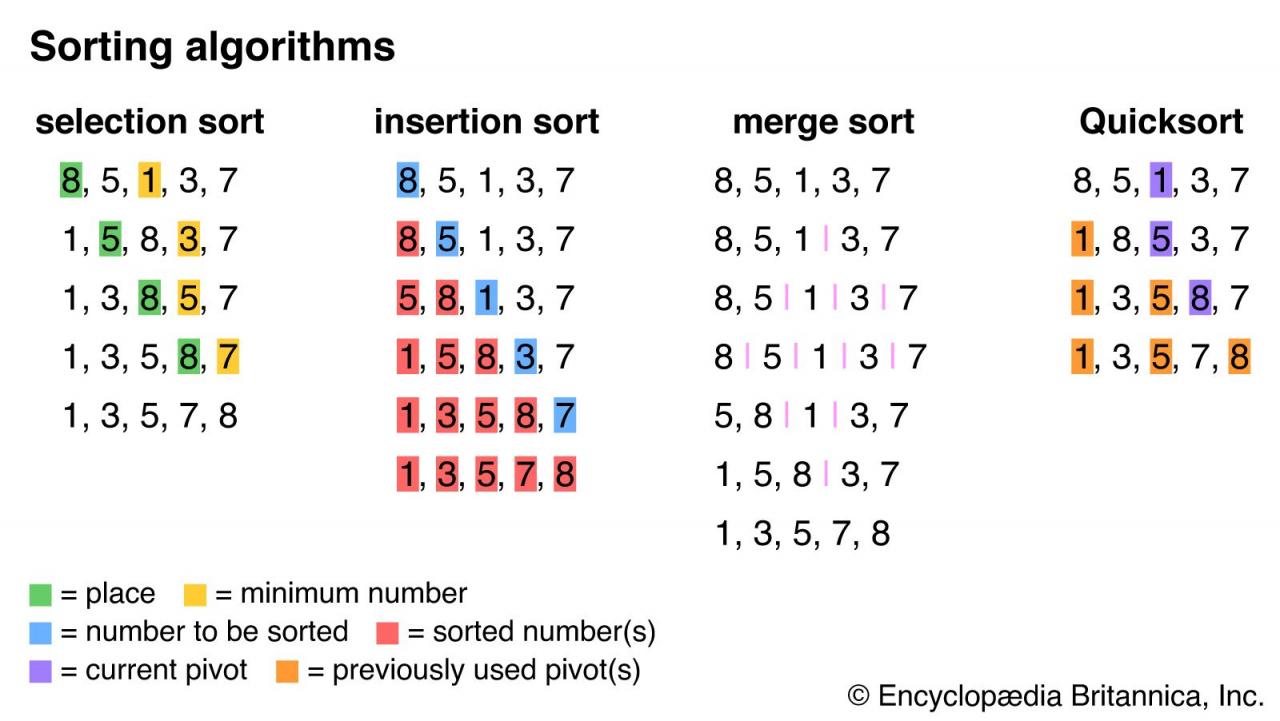Sort definition – Sorting, a fundamental concept in computer science, involves arranging data elements in a specific order, typically ascending or descending. Its purpose is to facilitate efficient data retrieval, organization, and analysis in various contexts.
From organizing customer records in a database to sorting search results on the web, sorting plays a crucial role in numerous applications.
Sort Definition

Sorting is the process of arranging a collection of elements in a specific order, such as ascending or descending. It involves comparing the elements and swapping their positions to achieve the desired order.
Sorting is a fundamental operation in computer science, used in various applications to organize and retrieve data efficiently. It helps in finding the maximum or minimum values, searching for specific elements, and performing statistical analysis.
Sorting Algorithms
There are numerous sorting algorithms, each with its own strengths and weaknesses. Some common algorithms include:
- Bubble Sort: A simple algorithm that repeatedly compares adjacent elements and swaps them if they are out of order.
- Selection Sort: Selects the smallest or largest element from the unsorted portion and places it in the correct position.
- Insertion Sort: Inserts each element into its correct position in the sorted portion.
- Merge Sort: Divides the array into smaller subarrays, sorts them, and then merges them back together.
- Quick Sort: Selects a pivot element and partitions the array into two subarrays based on the pivot.
Data Structures for Sorting, Sort definition
The choice of data structure can significantly impact the performance of a sorting algorithm. Common data structures used for sorting include:
- Arrays: A simple and efficient data structure for storing elements in a contiguous memory location.
- Linked Lists: A dynamic data structure where elements are stored in nodes connected by pointers.
- Trees: A hierarchical data structure that can be used for efficient searching and sorting.
Applications of Sorting
Sorting has a wide range of applications in various domains, including:
- Database Management: Sorting records based on specific criteria, such as customer name or order date.
- Data Analysis: Arranging data in a specific order to identify patterns, trends, and outliers.
- Search Engines: Ranking search results based on relevance or popularity.
- Scheduling: Sorting tasks based on priority or deadline.
Visualization of Sorting
Visualizations can help illustrate how different sorting algorithms work. Here’s a table comparing the time complexity of common sorting algorithms:
| Algorithm | Best Case | Average Case | Worst Case |
|---|---|---|---|
| Bubble Sort | O(n) | O(n^2) | O(n^2) |
| Selection Sort | O(n^2) | O(n^2) | O(n^2) |
| Insertion Sort | O(n) | O(n^2) | O(n^2) |
| Merge Sort | O(n log n) | O(n log n) | O(n log n) |
| Quick Sort | O(n log n) | O(n log n) | O(n^2) |
Epilogue
Sorting algorithms, data structures, and visualization techniques have revolutionized the way we process and manage data, enabling us to tackle complex problems and extract meaningful insights with unprecedented speed and accuracy.
FAQ Compilation
What is the primary purpose of sorting?
Sorting aims to arrange data elements in a specific order, making it easier to locate, retrieve, and analyze data efficiently.
What are the different types of sorting algorithms?
Common sorting algorithms include Bubble Sort, Insertion Sort, Selection Sort, Merge Sort, and Quick Sort, each with its own strengths and weaknesses.
How do data structures impact sorting performance?
The choice of data structure, such as arrays, linked lists, or trees, can significantly affect the efficiency and speed of sorting algorithms.